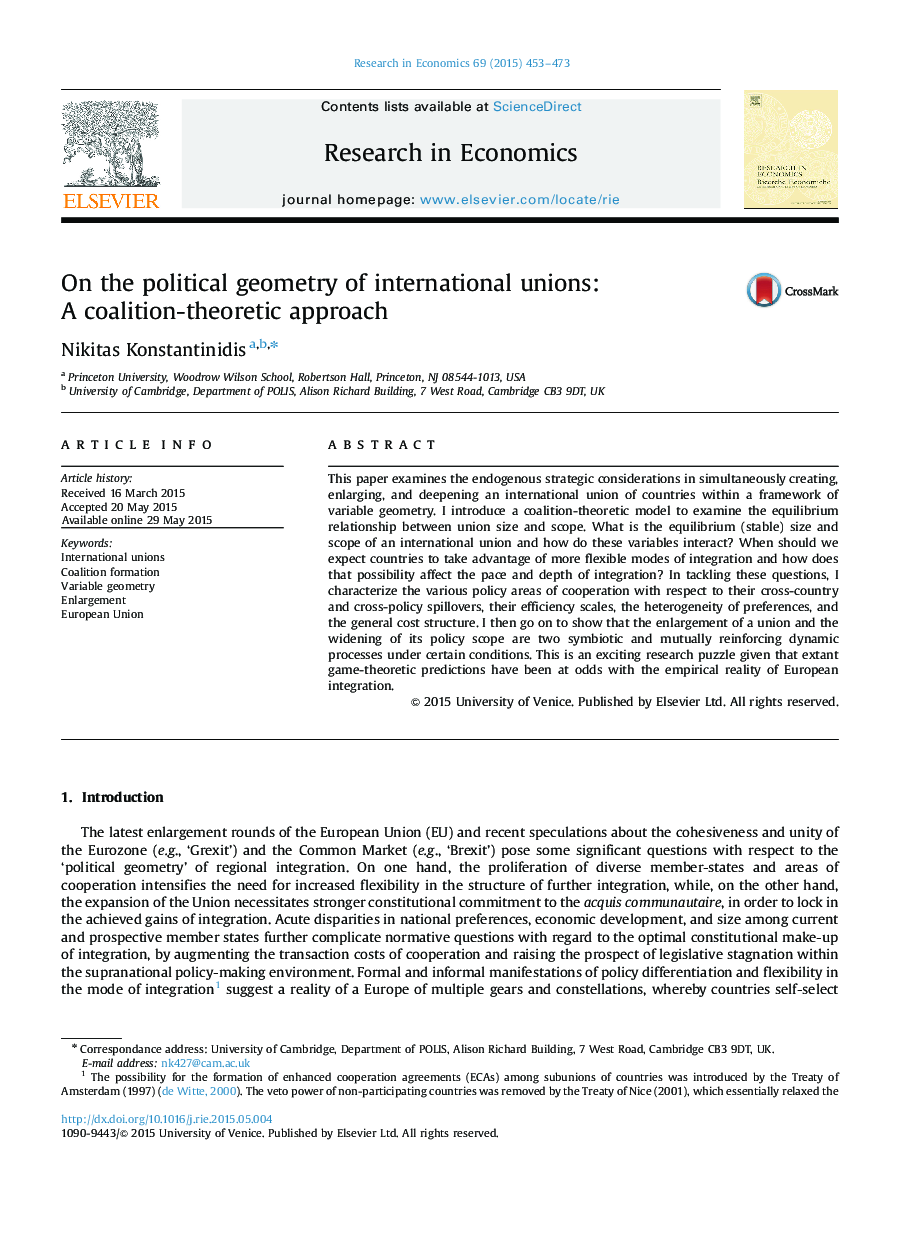| Article ID | Journal | Published Year | Pages | File Type |
|---|---|---|---|---|
| 984359 | Research in Economics | 2015 | 21 Pages |
•International unions as ‘economic clubs’ among sovereign nation states.•Static trade-off between union size and scope is reversed in a dynamic setting.•Regional integration expected to be more prevalent in policy areas of ‘low politics’.•Exogenous enlargement catalyzes the deepening process.•Subunions tend to emerge in policy areas with low fixed costs and complementarities.
This paper examines the endogenous strategic considerations in simultaneously creating, enlarging, and deepening an international union of countries within a framework of variable geometry. I introduce a coalition-theoretic model to examine the equilibrium relationship between union size and scope. What is the equilibrium (stable) size and scope of an international union and how do these variables interact? When should we expect countries to take advantage of more flexible modes of integration and how does that possibility affect the pace and depth of integration? In tackling these questions, I characterize the various policy areas of cooperation with respect to their cross-country and cross-policy spillovers, their efficiency scales, the heterogeneity of preferences, and the general cost structure. I then go on to show that the enlargement of a union and the widening of its policy scope are two symbiotic and mutually reinforcing dynamic processes under certain conditions. This is an exciting research puzzle given that extant game-theoretic predictions have been at odds with the empirical reality of European integration.
